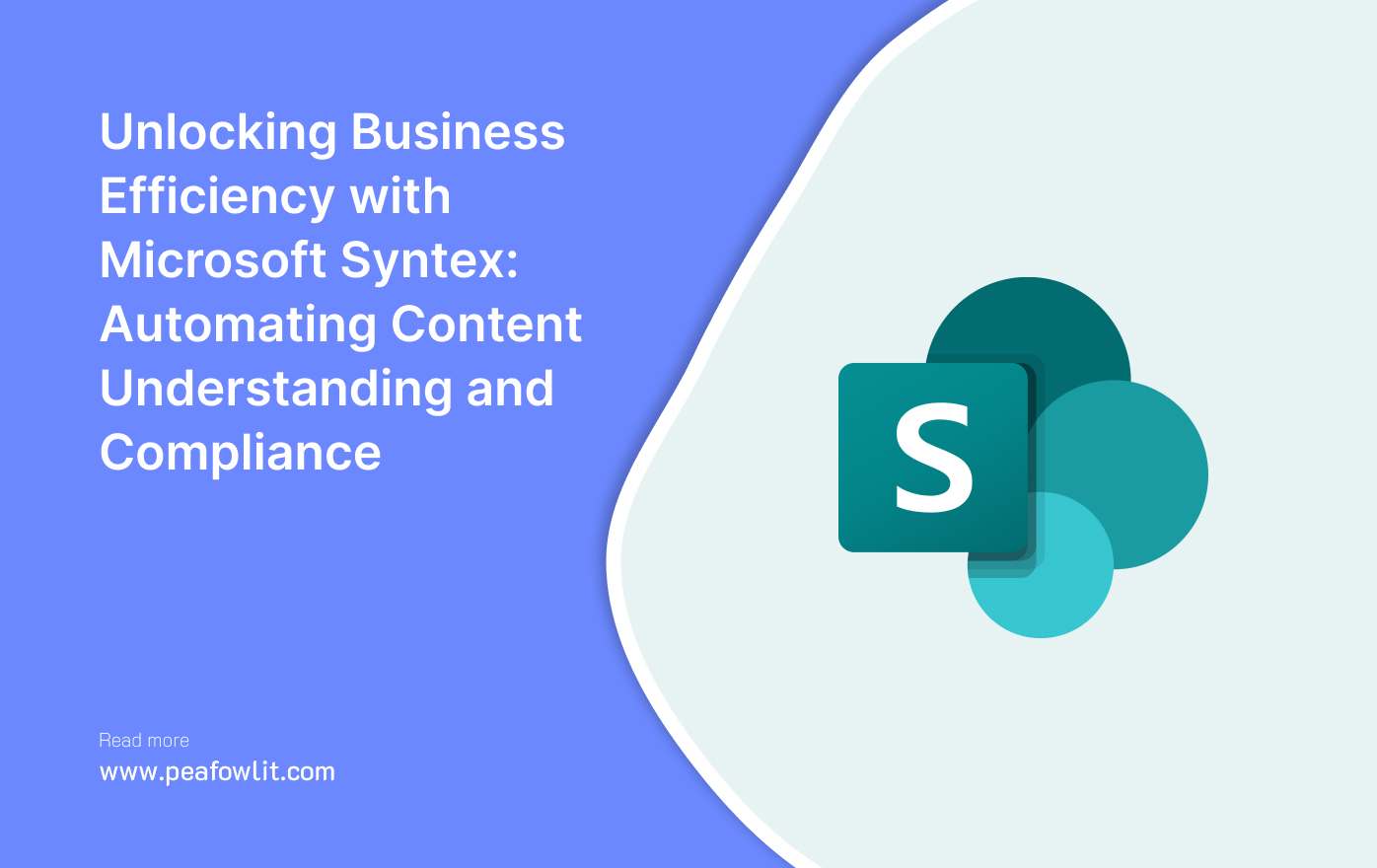
Modern enterprises operate in a competitive landscape that has high work pace and requires organizations to focus on continuously enhancing workflows. One such way is to implement AI and its capabilities that can help develop automation and improve business processes. Newly introduced framework Microsoft SharePoint Syntex assists organizations in transforming company’s routine processes by integrating management of intelligent content directly into document management. SharePoint Syntex contains several artificial intelligence-enhanced tools, which improve the understanding and management of documents processes and assist with the decision-making processes.
SharePoint Syntex features
- Syntex Content Center
Synthetics Content Center brings together AI models, workflows, and metadata management, automating content recognition and classification and tagging of content. It assimilates processes that you handle manually and uses them intelligently across the board to improve compliance and efficiency. Visual analytics monitor model activity, which helps to optimize workflows and automate content processing such as tagging. - Microsoft Graph content connectors
Syntex brings together Microsoft 365 and other external content sources with the help of Microsoft Graph content connectors. Thus, content with systems like Box and IBM FileNet can be indexed and searched with other Microsoft 365 documents making it easy to collaborate and search different sites in one place. - Advanced taxonomy services
Advanced taxonomy services provided by Syntex help in maintaining uniformity in content classification in the organization. Because of the term tracking and controlled vocabulary in publishing content types to SharePoint and Teams, there is a consistent and standardized tagging by Syntex, which enhances the search for relevance and compliance, and cuts the amount of administrative work that needs to be done. - Prebuilt document processing
In today’s fast-paced business environment, efficiently processing and extracting key information from documents like contracts, invoices, receipts, and more is essential. Building a custom document processing model from scratch can be time-consuming and complex. Fortunately, prebuilt models offer an ideal solution, providing a quick and accurate way to extract structured data from common business documents. In this post, we’ll explore how leveraging prebuilt document processing models can save you time and effort while streamlining your document management workflows. - Autofill columns
The content of the documents kept in the SharePoint document library can be automatically extracted, summarized, or created within an autofill columns. The use of large language models (LLMs) allows some columns to be populated with metadata without the need to be prompted, thus easing the burden of managing files and the relevant information about them. - Structured and freeform document processing
Structured and freeform document processing are models designed to extract information from different types of documents. The structured model is ideal for documents with a clear, predefined layout like forms and invoices, identifying fields and tables automatically. In contrast, the freeform model excels in extracting data from unstructured documents, such as letters and contracts, where information can appear anywhere. Both models leverage Microsoft Power Apps AI Builder within Syntex to create and train custom models for processing documents effectively. - Image tagging
To help manage images in the document libraries in SharePoint, augment Syntex with image tagging. It is the AI that produces such descriptive tags and adds them to the images. These keywords are captured in a managed metadata column which greatly enhances the ability to search, sort, filter and manage the images.
How does SharePoint Syntex enhance SharePoint?
SharePoint Information is the most enhanced feature of SharePoint as it allows automating the process of key information retrieval from documents. One feature is the use of pre-defined SharePoint Syntex models which are International A.I. Machine Teaching Models.
Once a model has been created, it may be released into multiple document libraries, thus automating the extraction of document metadata. That conserves resources such as time and money while at the same time improving the discoverability of each document, which is how SharePoint Syntex processes promote the enhancement of the corporate memory the knowledge at hand and transforms an otherwise forgotten document to a treasured company resource.
Microsoft SharePoint Syntex Use Cases
Use these example scenarios to prompt ideas about how you can use Microsoft Syntex in your organization
- Randomly display a Site Template available for Microsoft Syntex for a web solution professional. These templates include common elements that are relevant to a range of similar business functions, assisting organizations to set up and manage their SharePoint environment.
- Ask Syntex to create boilerplate versions of contracts, proposals, and reports to avoid repetitive document creation. Syntex, utilizing the data from the database spreadsheets, retrieves relevant information that is likely to be embedded in the documents, helping to maintain consistency while reducing the amount of work needed to create written documents.
- Use Microsoft Syntex to create several documents at the same time – when this is required. It can create a number of documents from data obtained from databases and using the appropriate templates in bulk. Great for big businesses.
- Microsoft Syntex for Document Understanding Creators can receive large volumes of paperwork in a short amount of time. Syntex Managed forms allow creators to make sense of the paperwork without having to process it all manually.
- Make Searches More Efficient with Microsoft Syntex documents can be enhanced by implementing a new approach to information organization that decreases search timelines and improves the visibility of content. Users are automatically presented with Recommender categories of information.
- Information Retrieval Made Simple with Microsoft Syntex find documents relevant to large-scale campaigns through tag identification and content profiling. With Syntex, users can quickly and easily retrieve important account data, events, and contacts.
Conclusion
More than just a tool, SharePoint Syntex can redefine how organizations manage their documents and utilize AI in their business processes. Just like any model built by smart people, SharePoint Syntex enables businesses to manage their work in a better way by decreasing input, improving data quality, and increasing process automation. Anytime you wish to transform how your company processes documents, SharePoint Syntex shall be on you watch list.








